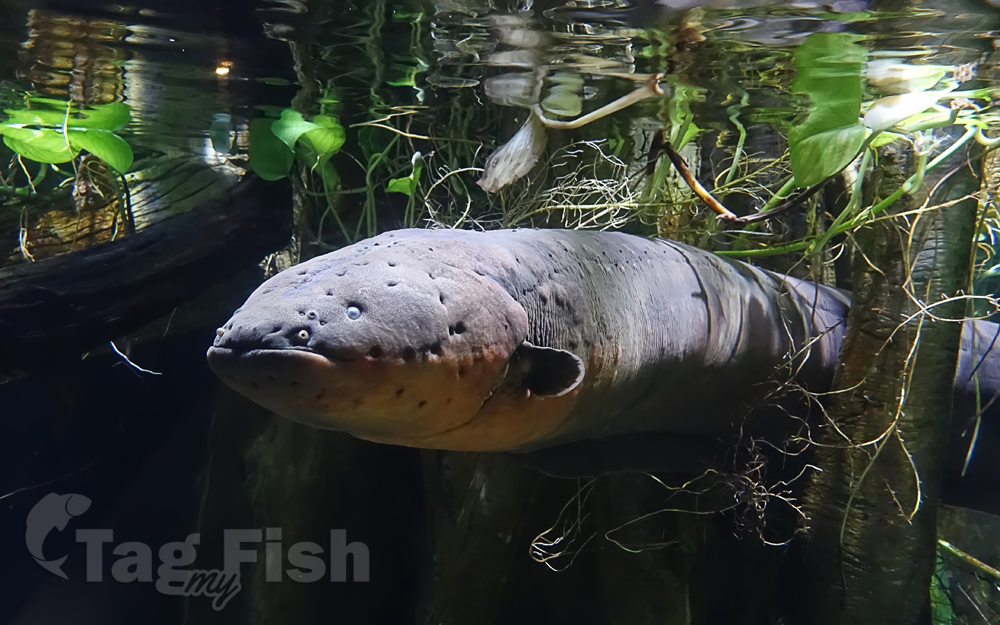Electric eel
(Electrophorus electricus)

General data
E. electricus has an elongated, cylindrical body, typically growing to about 2 m (6 ft 7 in) in length, and 20 kg (44 lb) in weight, making them the largest species of the Gymnotiformes.
Their coloration is dark gray-brown on the back and yellow or orange on the belly. Mature females have a darker color on the abdomen.
They have no scales.
The mouth is square, and positioned at the end of the snout.
The anal fin extends the length of the body to the tip of the tail.
As in other ostariophysan fishes, the swim bladder has two chambers. The anterior chamber is connected to the inner ear by a series of small bones derived from neck vertebrae called the Weberian apparatus, which greatly enhances its hearing capability. The posterior chamber extends along the whole length of the body and maintains the fish\\\\\\\'s buoyancy.
Electrophorus electricus has a vascularized respiratory system with gas exchange occurring through epithelial tissue in its buccal cavity. As obligate air-breathers, E. electricus must rise to the surface every ten minutes or so to inhale before returning to the bottom. Nearly eighty percent of the oxygen used by the fish is obtained in this way.
E. electricus inhabits fresh waters of the Amazon and Orinoco River basins in South America, in floodplains, swamps, creeks, small rivers, and coastal plains. They often live on muddy bottoms in calm or stagnant waters.
E. electricus feed on invertebrates, although adult eels may also consume fish and small mammals, such as rats.
First-born hatchlings eat other eggs and embryos from later clutches. The juveniles eat invertebrates, such as shrimp and crabs.











